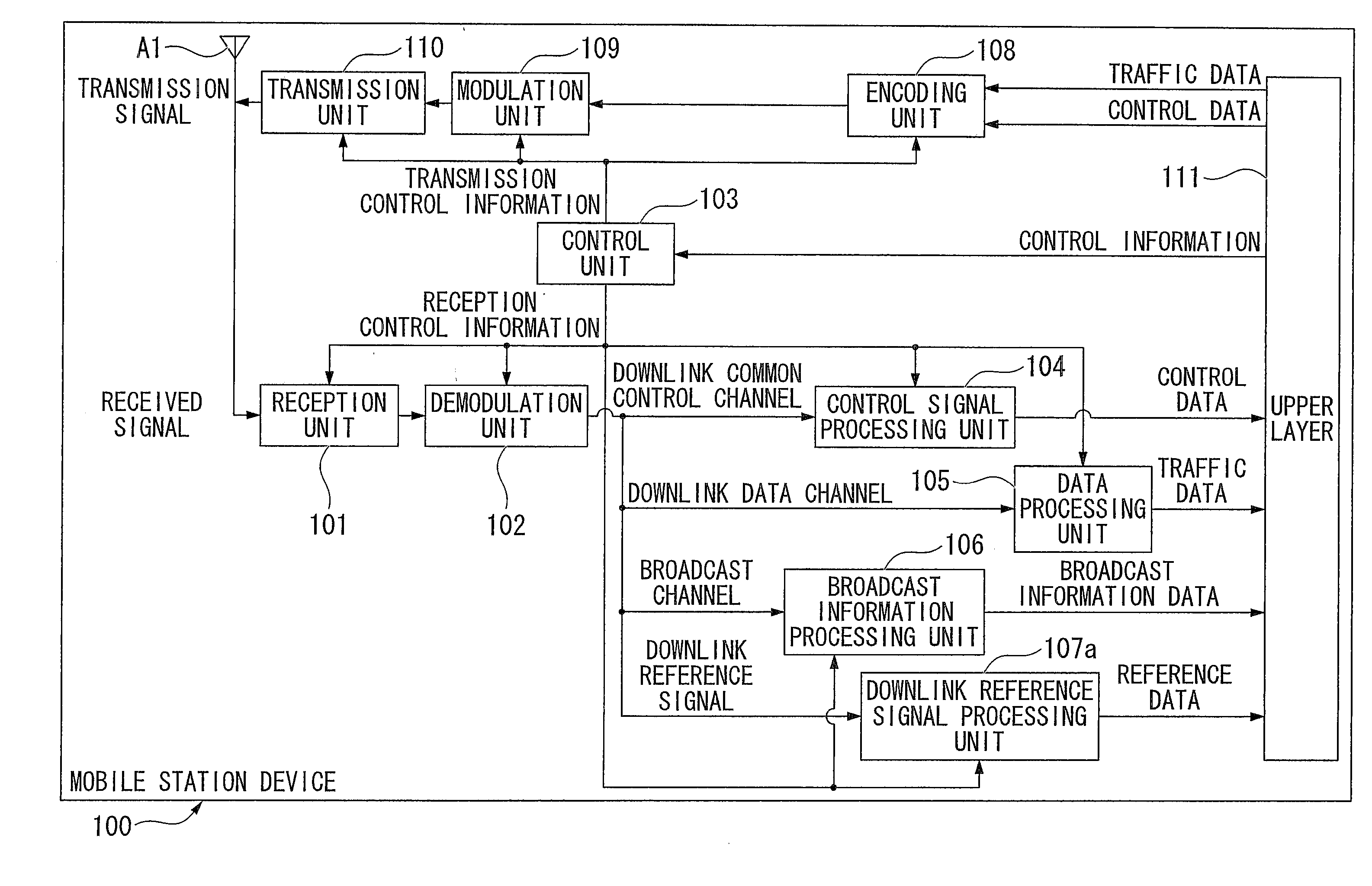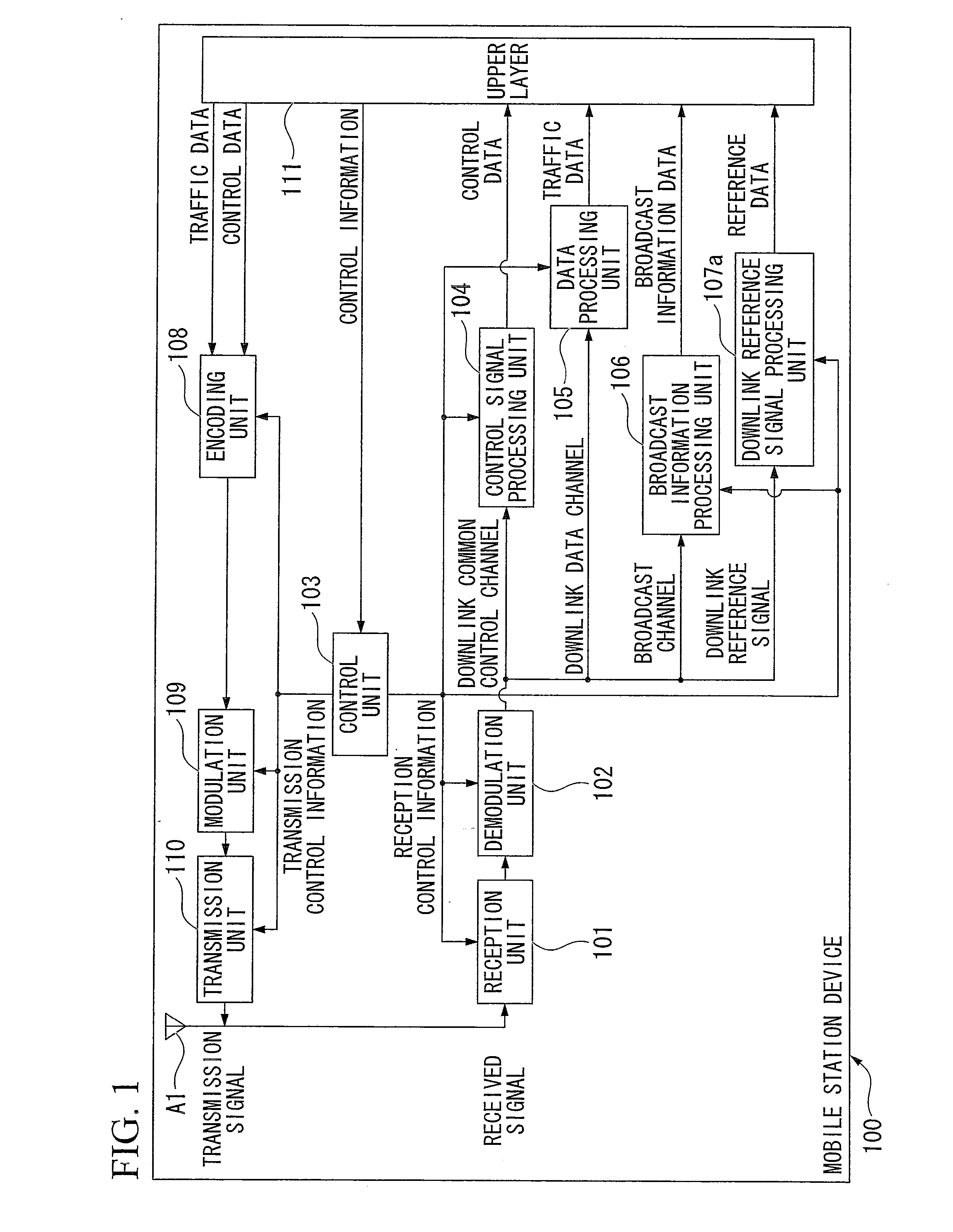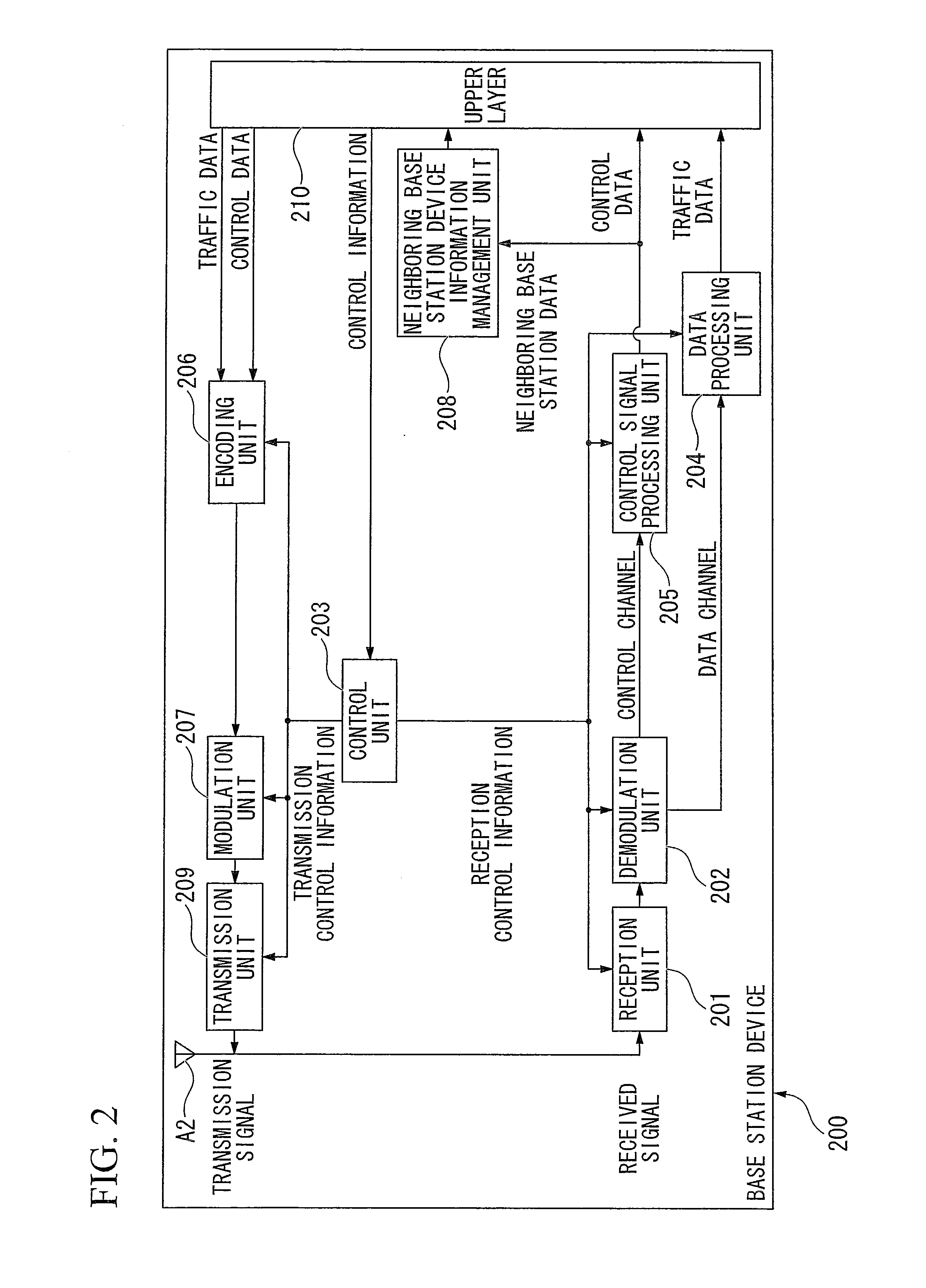Mobile communication system, base station device, mobile station device, and mobile communication method
a mobile communication system and mobile station technology, applied in the field of mobile communication systems, can solve the problems of inability to ensure the operation of the mobile station device in that area, inability to use the reception quality for the handover reference, and inability to recognize the cell id of the mobile station device in the same cell (cid_b), etc., to achieve the effect of simplifying the communication process
- Summary
- Abstract
- Description
- Claims
- Application Information
AI Technical Summary
Benefits of technology
Problems solved by technology
Method used
Image
Examples
first embodiment
[0122]First, a first embodiment of the present invention will be described.
[0123]FIG. 1 is a schematic block diagram showing a configuration of a mobile station device 100 according to the first embodiment of the present invention. The mobile station device 100 includes a reception unit 101, a demodulation unit 102, a control unit 103 (also referred to as a handover processing unit), a control signal processing unit 104, a data processing unit 105, a broadcast information processing unit 106, a downlink reference signal processing unit 107a, an encoding unit 108, a modulation unit 109, a transmission unit 110 (also referred to as a measurement result transmission unit), an upper layer 111, and an antenna A1.
[0124]A received signal (a transmission signal from the base station device) is received by the reception unit 101 via the antenna A1. The received signal is output to the demodulation unit 102 and demodulated based on reception control information input from the control unit 103...
second embodiment
[0173]Next, a second embodiment of the present invention will be described. A mobile communication system according to the second embodiment includes a base station device and a mobile station device. Since the configurations of the base station device and the mobile station device according to the second embodiment are the same as those of the base station device 200 (FIG. 2) and the mobile station device 100 (FIG. 1) according to the first embodiment, a description thereof is omitted.
[0174]However, the mobile station device 100 according to the second embodiment includes a downlink reference signal processing unit 107b instead of the downlink reference signal processing unit 107a.
[0175]The second embodiment provides a structure in which the mobile station device 100 acquiring the conflicting cell ID information can identify the reception quality of each of the conflicting cell IDs by receiving the GCID before the measurement report process.
[0176]The present embodiment is preferab...
third embodiment
[0220]Next, a third embodiment of the present invention will be described. A mobile communication system according to the third embodiment includes a base station device and a mobile station device. Since the configurations of the base station device and the mobile station device according to the third embodiment are the same as those of the base station device 200 (FIG. 2) and the mobile station device 100 (FIG. 1) according to the first embodiment, a description thereof is omitted.
[0221]The third embodiment provides a structure capable of identifying a cell accessed after handover by including conflicting cell ID information in a handover command message.
[0222]FIG. 12 is a sequence diagram showing a handover procedure according to the third embodiment of the present invention. FIG. 12 shows the handover procedure in the event of conflict of the cell ID.
[0223]The relationship of the mobile station device 100, serving cells and neighboring cells is the same as that of FIG. 3. In add...
PUM
 Login to View More
Login to View More Abstract
Description
Claims
Application Information
 Login to View More
Login to View More - R&D
- Intellectual Property
- Life Sciences
- Materials
- Tech Scout
- Unparalleled Data Quality
- Higher Quality Content
- 60% Fewer Hallucinations
Browse by: Latest US Patents, China's latest patents, Technical Efficacy Thesaurus, Application Domain, Technology Topic, Popular Technical Reports.
© 2025 PatSnap. All rights reserved.Legal|Privacy policy|Modern Slavery Act Transparency Statement|Sitemap|About US| Contact US: help@patsnap.com



